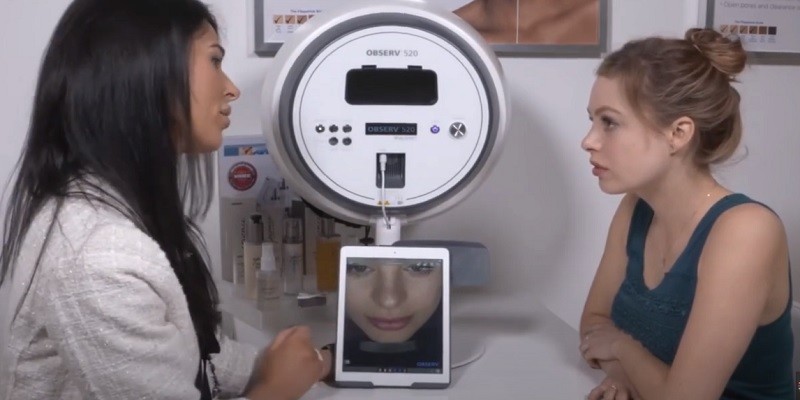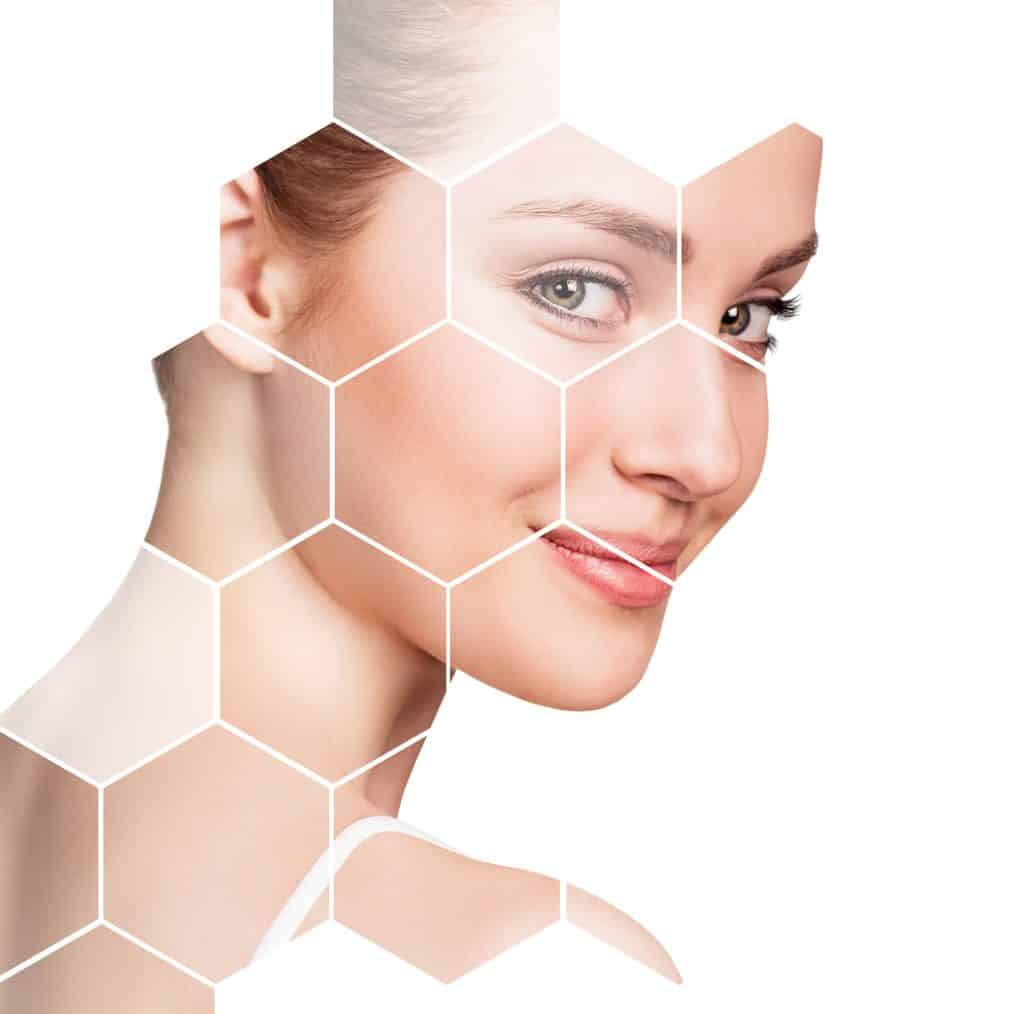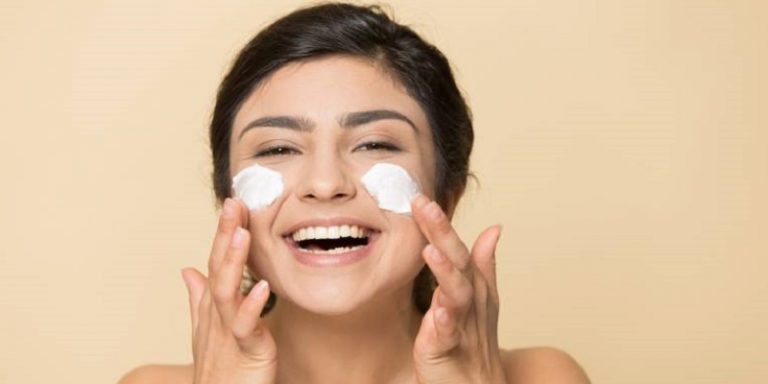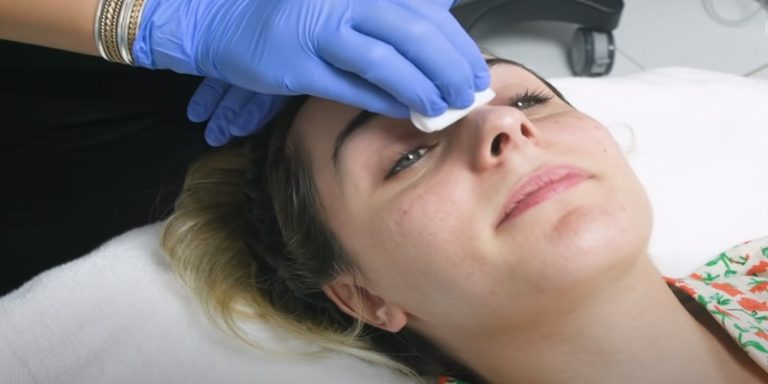What Is The First Step In A Skin Analysis?

Last Updated on June 18, 2025 by Jaclyn A. Neeley
The first step in a skin analysis is to cleanse the skin thoroughly. This helps remove any makeup, dirt, or oil so that the skin can be examined accurately.
Understanding the condition of your skin is crucial for determining the appropriate skincare routine. A skin analysis involves a systematic assessment of the skin’s type, concerns, and needs. The initial step of cleansing is essential as it provides a clean canvas for evaluation.
Various factors such as moisture levels, texture, pigmentation, and any existing issues are observed during the analysis. Skin professionals typically use tools like a magnifying lamp or a Wood’s lamp to aid in the assessment. By conducting a comprehensive skin analysis, individuals can gain a better understanding of their skin and receive personalized recommendations for optimal skincare.
The Basics Of Skin Analysis
Before embarking on any skincare routine, it is crucial to gain a thorough understanding of your skin’s unique needs and concerns. This is where skin analysis plays a vital role. Skin analysis is the first step in evaluating the condition of your skin and identifying any underlying issues. By assessing factors such as moisture levels, sebum production, pigmentation, and texture, you can determine the appropriate course of action for achieving a healthier, more radiant complexion.
When it comes to skincare, a one-size-fits-all approach simply does not work. Each individual has a different skin type, and even within the same skin type, there may be variations in concerns and conditions. This is where skin analysis becomes indispensable. By analyzing your skin, you can customize your skincare routine to address specific issues effectively. For instance, if your skin lacks moisture, you can focus on hydrating products, whereas if your skin is prone to acne, you can tailor your routine to include ingredients that combat breakouts.
Skin analysis is a comprehensive process that takes into account various factors. These factors can influence the overall condition of your skin and help determine which skincare products and treatments are most suitable for you. Some of the key factors that affect skin analysis include:
1. Skin Type:
Your skin type – whether oily, dry, combination, or sensitive – is a fundamental element in skin analysis. Different skin types have different needs, and understanding your skin type is crucial for developing an effective skincare routine.
2. Environmental Factors:
The environment we live in can have a significant impact on our skin. Factors like pollution, UV radiation, and climate conditions can affect skin health and aggravate existing skin concerns.
3. Lifestyle And Habits:
Our lifestyle choices and habits can greatly influence our skin’s condition. Smoking, excessive alcohol consumption, poor diet, lack of sleep, and stress can all contribute to skin problems and impact the results of a skin analysis.
4. Age And Genetics:
Age and genetics play a crucial role in skin analysis. As we age, our skin undergoes natural changes, such as a decrease in collagen and elastin production. Additionally, certain genetic factors can predispose us to certain skin conditions or concerns.
5. Product Usage:
The skincare products we use can impact the results of a skin analysis. Ingredients in products, such as cleansers, moisturizers, and serums, can interact with our skin, leading to either positive or negative effects.
The basics of skin analysis is paramount for maintaining healthy, glowing skin. By recognizing the significance of assessing the skin condition, acknowledging the role of skin analysis in skincare routines, and considering the various factors affecting skin analysis, you can lay the foundation for an effective and personalized skincare regimen.
The First Step: Visual Examination Of The Skin
When it comes to analyzing the skin, the first step is a thorough visual examination. This initial assessment allows skincare professionals to observe the overall condition of the skin, identify specific concerns and conditions, and note any visible imperfections. By paying close attention to these details, professionals can gather valuable insights that serve as the foundation for a comprehensive skin analysis.
Observing The Overall Skin Appearance
During the visual examination, the overall appearance of the skin is thoroughly observed. Its texture, color, and moisture levels are carefully evaluated. This step provides important clues about the skin’s health and potential issues.
Identifying Skin Concerns And Conditions
It is crucial to identify any existing skin concerns or conditions, such as acne, pigmentation issues, or signs of aging. By recognizing these specific issues, skincare professionals can tailor their analysis and treatment recommendations to address the individual needs of the client.
Taking Note Of Any Visible Imperfections
Visible imperfections, such as scars, blemishes, or redness, are noted during the visual examination. These imperfections can provide valuable insights into the skin’s history and potential sensitivities, guiding the development of an appropriate skincare plan.
Utilizing Specialized Tools For In-depth Analysis
The first step in a skin analysis involves utilizing specialized tools for a comprehensive and detailed examination, ensuring accurate and thorough results. Techniques such as magnifiers, UV lights, and moisture meters are employed to assess the skin’s condition and identify any specific concerns or areas of improvement.
Introduction To Skin Analysis Equipment
When analyzing the skin, utilizing specialized tools is essential to gather accurate and comprehensive data about the skin’s condition. These tools enable skincare professionals to perform a thorough assessment, understand the specific needs of the skin, and develop tailored treatment plans.
The Purpose And Function Of Each Tool
Each specialized tool serves a unique purpose in the skin analysis process. From magnifying devices to moisture analyzers, these instruments offer valuable insights into the skin’s texture, hydration levels, pigmentation, and overall health. Understanding the function of each tool is crucial for conducting a precise and detailed skin analysis.
How These Instruments Enhance The Analysis Process
Utilizing specialized tools enhances the skin analysis process by providing objective data and visual evidence of various skin conditions. These instruments aid in identifying issues that may not be visible to the naked eye, allowing skincare professionals to make informed decisions and recommend appropriate skincare products and treatments.
Assessing Skin Type And Texture
When it comes to providing effective skincare solutions, the first step is to perform a comprehensive skin analysis. This process allows us to gain a deep understanding of an individual’s unique skin concerns and needs. One crucial aspect of this assessment is assessing the skin type and texture. By determining the skin type and analyzing the texture and smoothness, skincare routines can be tailored to address specific issues for optimal results.
Determining The Individual’s Skin Type
The first H3 heading in the skin analysis process focuses on determining the individual’s skin type. This step gives valuable insights into the characteristics of the skin, guiding the selection of appropriate skincare products and treatments. There are typically four primary skin types: normal, oily, dry, and combination. Each skin type requires specific care and attention to maintain its natural balance and condition.
| Types of Skin | Characteristics |
|---|---|
| Normal | Well-balanced, neither too oily nor too dry |
| Oily | Excess oil production, shiny appearance |
| Dry | Lacking moisture, often flaky or tight |
| Combination | Both oily and dry areas, typically oily in the T-zone |
Analyzing The Skin’s Texture And Smoothness
The next H3 heading in the skin analysis process involves analyzing the skin’s texture and smoothness. This evaluation provides essential information about the surface of the skin, including its firmness, elasticity, and overall appearance. Various factors, such as genetics, sun exposure, and lifestyle choices, can affect the texture and smoothness of the skin.
- Firmness: Assessing the firmness of the skin helps determine whether it is sagging or lacks elasticity. This information influences the selection of skincare products aimed at improving skin elasticity and promoting a more youthful appearance.
- Elasticity: Evaluating the elasticity of the skin is crucial. It reveals how well the skin can bounce back after being stretched. Identifying diminished elasticity allows us to recommend appropriate treatments and products to restore its elasticity.
- Appearance: Analyzing the overall appearance of the skin, including any visible signs of aging, unevenness, or blemishes, aids in developing a targeted skincare routine.
Adapting Skincare Routines Based On Skin Analysis Results
Once the skin analysis is complete and the individual’s skin type, as well as texture and smoothness, have been assessed, it is time to adapt skincare routines based on the analysis results. This step is crucial in crafting a personalized skincare regimen that caters to each individual’s unique needs.
- Selecting appropriate cleansing products suited to the individual’s skin type and texture
- Choosing moisturizers that provide the necessary hydration without exacerbating oily or dry areas
- Identifying targeted treatments to address specific concerns, such as acne, wrinkles, or discoloration
- Suggesting lifestyle modifications that can improve overall skin health, such as adequate sun protection and a balanced diet
By adapting skincare routines based on the comprehensive skin analysis, individuals can nurture and support their skin’s natural attributes, ensuring a healthy and radiant complexion.
Considering Environmental And Lifestyle Factors
Before diving into a comprehensive skin analysis, it is crucial to take into account the impact of environmental and lifestyle factors. Our skin is constantly exposed to various external elements that can influence its health and appearance. Additionally, our day-to-day habits and routines can also play a significant role in the condition of our skin. By recognizing and evaluating these factors, we can develop a more accurate understanding of our skin’s unique characteristics and tailor our skincare routines accordingly.
The Impact Of Environmental Factors On The Skin
Environmental factors such as pollution, UV radiation, weather conditions, and even the air quality in our surroundings can have a profound effect on our skin. These external elements can cause dryness, inflammation, premature aging, and even skin disorders. Understanding how specific environmental factors interact with our skin is essential for effective skin analysis. For instance:
- Pollution: Air pollution, including particulate matter and free radicals, can clog pores, increase oil production, and contribute to the development of acne and other skin conditions.
- UV Radiation: Overexposure to the sun’s harmful UV rays can lead to sunburn, pigmentation issues, collagen breakdown, and an increased risk of skin cancer.
- Weather Conditions: Extreme temperatures, high humidity, and low humidity can all impact the skin’s moisture levels, leading to dryness, flakiness, sensitivity, and even excessive oiliness.
By recognizing these environmental factors and their potential effects on the skin, we can determine the appropriate measures to protect and care for it.
Evaluating The Individual’s Lifestyle Habits And Their Effects On The Skin
Our lifestyle habits can significantly influence the condition of our skin. Factors such as sleep patterns, stress levels, exercise routines, diet, and skincare practices all contribute to the overall health of our skin. While each individual’s habits may vary, it is important to evaluate the following aspects when analyzing the skin:
- Sleep Patterns: Inadequate sleep can lead to a dull complexion, dark circles, and increased water retention, which can contribute to under-eye puffiness.
- Stress Levels: High stress levels can trigger hormonal imbalances that result in increased oil production, leading to congested pores and breakouts.
- Exercise Routines: Exercise promotes blood circulation and oxygenation to the skin, contributing to a healthy and radiant complexion. However, excessive sweating without proper cleansing can lead to clogged pores.
- Diet: A well-balanced diet rich in fruits, vegetables, and essential nutrients can enhance skin health and minimize issues such as acne, inflammation, and premature aging.
- Skincare Practices: The use of harsh or inappropriate skincare products, inconsistent routines, or failure to remove makeup can all impact the skin’s texture, hydration, and overall health.
By evaluating these lifestyle habits and their potential effects on the skin, we can identify any patterns or factors that may be contributing to specific skin concerns.
Incorporating This Information Into The Overall Analysis Process
Once we have a clear understanding of the impact of environmental factors and lifestyle habits on the skin, we can incorporate this information into the overall skin analysis process. This involves gathering additional details about the individual’s particular circumstances, concerns, and desired outcomes. By combining all these factors, we can create a comprehensive analysis that considers both the external influences and internal habits, making our approach more personalized and effective.

Credit: www.vie-aesthetics.com
Frequently Asked Questions Of What Is The First Step In A Skin Analysis?
What Is The First Step In A Skin Analysis?
The first step in a skin analysis is a thorough examination of the skin using a magnifying lamp or a handheld device.
Conclusion
The first step in a skin analysis is crucial to determine the specific needs of your skin. By consulting with a skincare professional, you can undergo a thorough examination and assessment of your skin’s condition. This initial step allows for the identification of any concerns or issues, enabling the development of a personalized skincare routine that targets your unique requirements.
Taking this important first step sets the foundation for achieving healthy and radiant skin.






